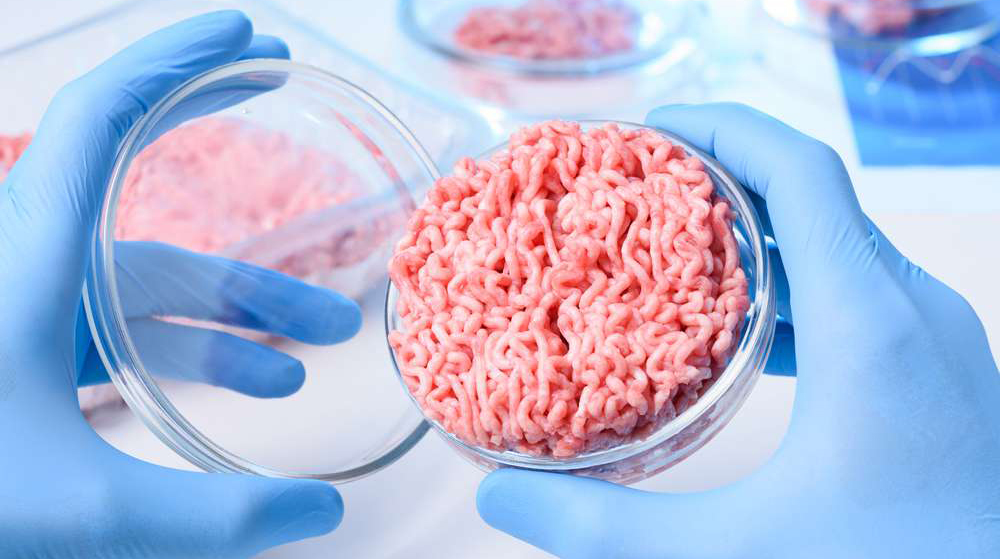The agricultural industry, and more specifically the meat industry, is expected to change significantly in the upcoming decades (Le Mouël et al., 2015). Today’s society is facing numerous challenges regarding feeding the growing human population. Alexandratos and Bruinsma (2012) argue that a sixty percent increase in the world food supply is needed before 2050 to feed the unprecedented increasing human population. Besides the necessity of feeding the population, the agricultural industry must respond to developing social expectations as well as reducing the carbon footprint significantly (Hocquette, 2016). Society is becoming increasingly concerned with the life and welfare of animals, the threatened environment as well as a balanced and healthy diet. Further, as the agricultural industry is responsible for one-third of all human-caused greenhouse emissions reducing the industries carbon footprint is essential in limiting the effects of climate change (Gilbert, 2012). Summarizing, the agricultural and meat industry are unsustainable in its current form (Feenstra, 2013). The aforementioned factors will drive fast-paced changes in the industry, one of which is artificial meat.
Artificial meat, or lab-grown meat, is supposedly heading to your dinner table. Lab-grown meat is made by taking a muscle sample from the animal, after which stem cells are collected. The stem cells are dramatically multiplied which ‘allows them to differentiate into primitive fibers that then bulk up to form muscle tissue’ (Scientific American, 2018). Over the last decade several start-ups have attempted to turn artificial meat into an economically viable solution ranging from beef, poultry, pork to seafood. For example, Memphis Meat has attracted 17 million dollars in funding from multiple investors including Bill Gates and developed the world’s first clean meatball. Unfortunately, a quarter-pound of Memphis Meat’s ground beef costs $600 (which still is a significant reduction from $300.000 in 2013).
Economically viable lab-grown meat has multiple benefits. Not only does it generate employment through the creation of a new industry, it can help support the increasing demand for meat around the world. As stated in the first paragraph, the agricultural industry in its current form is not able to (carbon) effectively feed the growing world population. Furthermore, artificial meat would stimulate small-scale farming while decreasing factory farming. Factory farming is notorious for its poor conditions and lack of regard for the life and welfare of animals. In other words, artificial meat is superior from an ethical stand point as well. A point often overlooked are the health benefits associated with lab-grown meat. Besides being able to control the ratios of protein or fat in the meats, there is almost no need for antibiotics as the meat will be produced in a sterile environment. The US Food and Drug Administration argued that antibiotics in the diets of our livestock contribute significantly to the development of antibiotic-resistant bacteria (FDA, 2018). Lastly and most importantly, are the suitability benefits of lab-grown meats. Jacobsen (2017) states that making “1,000 kg of cultured meat takes 7 to 45% less energy, 78% to 96% lower greenhouse emissions, about 90% less water, and 99% less land.” Therefore, switching from factory farming to the laboratories could have a long-term positive impact on the environment.
The potential benefits of lab-grown meat are significant and widely shared. However, issues such as taste, safety, healthfulness, technological developments and costs are often underexposed. Although the artificial meat industry still has a long way to go and a lot of hurdles to cross, I’m willing to bet you a (lab-grown) burger that McDonald’s will sell clean meat in the upcoming decade.
Arthur Fortanier
Discussion
Would you eat artificial meat? Why (not)?
Sources
http:/www.scientificamerican.com/article/lab-grown-meat/
http:/www.reddit.com/r/explainlikeimfive/comments/7yg3ar/eli5_synthetic_meat/
http:/www.fda.gov/ForConsumers/ConsumerUpdates/ucm092810.htm
http:/www.futuresplatform.com/blog/are-we-ready-artificial-meat
http:/www.bestfoodfacts.org/is-synthetic-meat-in-our-future/
http:/iopscience.iop.org/article/10.1088/1748-9326/10/8/085010/meta
http:/www.sciencedirect.com/science/article/pii/S0306919213001012



